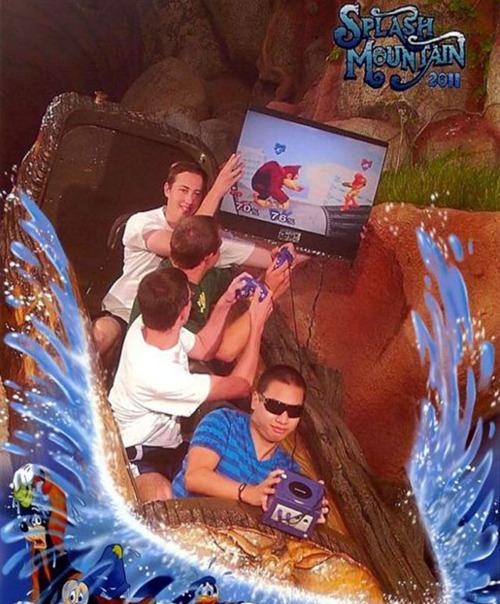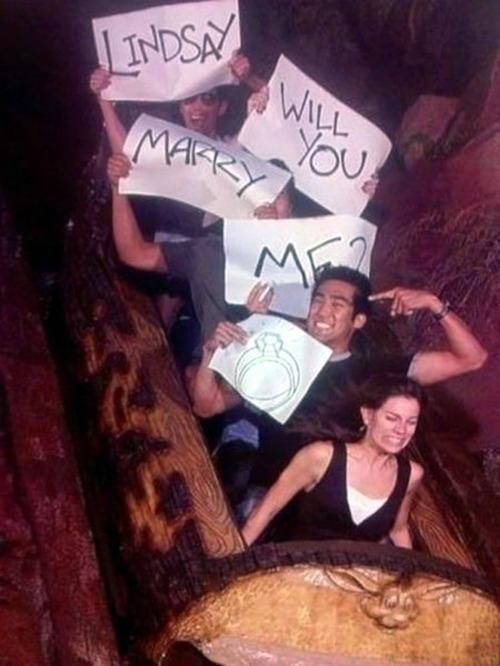How To Start Your Book
How to start your book
Here are my best tips to write your opening chapter in your novel like a pro.
Start in a peculiar situation What is a situation that’s totally unexpected to your readers, but an everyday occurrence to your characters? Start there!
Make sure you cover all these elements 💜 Introducing your protagonist 💜 And their flaw 💜 And what they struggle with 💜 Build a first look at the atmosphere of your book 💜 Signal your genre 💜 Establish your narrative position
Keep it all about the intrigue! It’s very tempting to unload everything onto your reader in the first chapter, because you just want them to know everything. But the more you can hold back, the more intrigue you will create, and therefore - more reason for the reader to keep flipping pages.
Don’t forget to hint at your story question Now this is a really important step that a lot of writers leave out and their first chapter suffers for it. It has to do with your hero’s flaw. This will be closely connected to the story question you’re asking. Make sure you include a quick hint at the bigger conflict that your story will be exploring and how your hero’s flaw might play into it.
Your characters are key Absolutely the most crucial thing about your first few chapters is to establish a connection with your characters. Character empathy is what drives readers’ interest. Don’t go in with a whole character backstory, but instead show us who they are right now, and why we should care about what happens to them.
Things to avoid ❌ Info-dumping! ❌ Introducing too much about your world all at once ❌ Introducing too many characters ❌ Giving your readers answers instead of questions
Also…
Want fully customizable templates for your writing? Character sheets, outlines, chapter treatments, world-building, questionnaires and more?
Grab our 3 E-books for writers through the [link here] or below! They each come with 40 pages of easy theory and resources.
The Plotter’s Almanac
The Character Bible
The World Builder’s Chronicle

More Posts from Totallynotobsessedspades and Others
How to Improve Your Dialogue
As an editor, one of the biggest problems I see in beginning fiction writers’ dialogue is a lack of conflict.
(Come to think of it, one of the biggest problems I see in general is a lack of conflict, but that’s another post.)
Good dialogue, like a good story, should be rich with conflict. There are exceptions – most notably in a story’s ending or in brief, interspersed moments when you want to slow down the pace. But as a general guideline, dialogue without conflict gets boring very quickly. Here’s a classic example:
“Hi,” Lisa said. “Hey,” José said. “How are you?” “Fine. You?” “Doing all right.” Lisa handed José a turkey sandwich. “Would you like a sandwich? I made two.” “Sure, thanks.”
Okay, that’s enough. I won’t continue to torture you. Not only is there no conflict between the two characters who are speaking, but there’s no conflict anywhere to be seen.
The bad news is that if you write something like this you will bore your reader to tears.
The good news is that there are lots of ways to add conflict to dialogue. Once you know how to do it, you can make just about any scene pop with tension.
Of course, you don’t want to add conflict just for the sake of conflict. Whatever conflict you choose should be relevant to the story as a whole, to the scene, and to the characters.
Here’s my first tip: Have your characters say “No” to each other
One of the easiest ways to give conflict to a scene like this is to have your characters say No to each other, metaphorically speaking. In other words, to push back against the first character instead of just agreeing with them and refuse to have the conversation on the terms that the other character is proposing.
This is sometimes called giving characters different scripts.
Doing this creates an immediate power struggle that not only creates a more interesting story but can be really fun to play with. Here’s an example of how this idea could improve the scene between Lisa, Jose, and the sandwich:
“Hi,” Lisa said. “You forgot the mustard,” José said. Lisa thrust the turkey sandwich across the counter. “I’m fine, thanks. How are you?” “I don’t want it.” “I already made two. You should’ve said something earlier.”
Did you catch all the “No”s in that dialogue? Here it is again with my notes:
“Hi,” Lisa said. [Lisa is offering a friendly exchange.] “You forgot the mustard,” José said. [José refuses the offer and changes the subject.] Lisa thrust the turkey sandwich across the counter. “I’m fine, thanks. How are you?” [Lisa refuses to change the subject to the mustard, offers the sandwich as-is, and – bonus points – answers a question that hasn’t been asked.] “I don’t want it.” [José refuses to take the sandwich that’s been offered. Interestingly, though, he doesn’t try to take the power back in the situation by offering a new proposal, so he opens himself to a power grab from Lisa.] “I already made two. You should’ve said something earlier.” [Lisa acknowledges what José has said, but refuses to give into him by, for example, offering to make him another sandwich, add the mustard, etc.]
A big improvement, right? Dialogue like this makes us lean in and ask: What’s happening? Why are Lisa and José so testy with each other? What’s going to happen next? Will they make up? Will they come to blows?
If a scene like this comes midway through a story, we might already know that José is mad at Lisa because she didn’t come to the opening of his play last Saturday, and that Lisa, let’s say, has a bad temper and a history of throwing punches at José, in which case the dialogue becomes a great example of subtext.
Instead of having Lisa and José talk directly about the issue at hand (also called on-the-nose dialogue), we watch how the tension surfaces in their everyday interactions.
We get to become observers – flies on the wall – to their dramatic experience. In classic terminology, we are shown and not told the story.
Another thing to notice about this example is the use of gesture to enhance the dialogue’s conflict. Notice how when Lisa thrusts the turkey sandwich across the counter, it gives us information about her emotional state and implies a tone for the rest of her lines that we can hear without having to resort to clunky devices like “Lisa said sarcastically,” “Lisa said bitterly,” etc.
I have a few more tips about how to add conflict to your dialogue, but I will save it for another post. Hope this helps!
/ / / / / / /
@theliteraryarchitect is a writing advice blog run by me, Bucket Siler, a writer and developmental editor. For more writing help, download my Free Resource Library for Fiction Writers, join my email list, or check out my book The Complete Guide to Self-Editing for Fiction Writers.
@ everyone who likes rambling about their favorite characters :)
tagged by @evergreen-lyricist
rules: list your top ten favourite female characters, then let your followers pick one!
tagging @blueskiesandstarrynights @zannolin @crashed-wing and anyone else who wants to!
At the gate for my flight home from visiting friends and there's a woman here with a service Shiba Inu. No pics because he has a Do Not Disturb vest and taking pics of strangers is illegal but I need to stress how ON DUTY this animal is. Ears up. Eyes doing Lazer scans of everything. Examining everyone who passes within 10ft like a security guard. Ass planted on her feet. I have never seen a dog with such intense chivalric guardian energy before. He has tiny eyebrows and they are FURROWED with concentration.









ITS STILL JANUARY I’M NOT LATE
also excited for silverborn and the fourth book of the Sir Callie series getting published!! i can’t start talking about the raven boys graphic novel or thisll turn into a ramble
@activatebutterflyshield @writer-of-random-things @ anyone else who likes talking about books :)









9 books I want to read in 2025, tagged by @livingasaghost and @mackaronicheese
Tagging @lgbtqforeverything @bookwyrminspiration @frecht and anyone else who wants to join in!
some people think writers are so eloquent and good with words, but the reality is that we can sit there with our fingers on the keyboard going, “what’s the word for non-sunlight lighting? Like, fake lighting?” and for ten minutes, all our brain will supply is “unofficial”, and we know that’s not the right word, but it’s the only word we can come up with…until finally it’s like our face got smashed into a brick wall and we remember the word we want is “artificial”.
So... I found this and now it keeps coming to mind. You hear about "life-changing writing advice" all the time and usually its really not—but honestly this is it man.
I'm going to try it.

Editing Tips: Watch Out for Tautology
When you say the same thing twice with different words, it's a "tautology". They make manuscripts wordy.
Examples:
He shrugged his shoulders. -> He shrugged.
She clapped her hands. -> She clapped.
Her feet stepped back. -> She stepped back.
He hand picked up the knife. -> He picked up the knife.
If a movement is necessary for an action, the movement is included in the action and doesn't need to be spelled out separately.
He reached out his arm and took the book from her -> He took the book from her.
She lifted the glass to her lips and drained it. -> She drained her glass.
─── ・ 。゚☆: *.☽ .* . ───
💎If you like my blog, buy me a coffee☕ and find me on instagram!
💎Before you ask, check out my masterpost part 1 and part 2
💎For early access to my content, become a Writing Wizard
-
 russenoire liked this · 7 months ago
russenoire liked this · 7 months ago -
 kitsune-vv liked this · 1 year ago
kitsune-vv liked this · 1 year ago -
 lemonsnickersenjoyer liked this · 1 year ago
lemonsnickersenjoyer liked this · 1 year ago -
 shindakuiru reblogged this · 1 year ago
shindakuiru reblogged this · 1 year ago -
 yenoodlethings liked this · 1 year ago
yenoodlethings liked this · 1 year ago -
 totallynotobsessedspades reblogged this · 1 year ago
totallynotobsessedspades reblogged this · 1 year ago -
 icy-writes reblogged this · 1 year ago
icy-writes reblogged this · 1 year ago -
 our-raven-strife-universe reblogged this · 1 year ago
our-raven-strife-universe reblogged this · 1 year ago -
 whispersinthedawn reblogged this · 1 year ago
whispersinthedawn reblogged this · 1 year ago -
 writingcroissant-perused reblogged this · 1 year ago
writingcroissant-perused reblogged this · 1 year ago -
 fates-journal liked this · 1 year ago
fates-journal liked this · 1 year ago -
 write-101 reblogged this · 1 year ago
write-101 reblogged this · 1 year ago -
 halfblood-princes-crown liked this · 1 year ago
halfblood-princes-crown liked this · 1 year ago -
 abyssalgalaxy reblogged this · 1 year ago
abyssalgalaxy reblogged this · 1 year ago -
 abyssalgalaxy liked this · 1 year ago
abyssalgalaxy liked this · 1 year ago -
 uraniawrites liked this · 1 year ago
uraniawrites liked this · 1 year ago -
 heartstationw reblogged this · 1 year ago
heartstationw reblogged this · 1 year ago -
 heartstationw liked this · 1 year ago
heartstationw liked this · 1 year ago -
 letsselenitequartz liked this · 1 year ago
letsselenitequartz liked this · 1 year ago -
 puckmaidens liked this · 1 year ago
puckmaidens liked this · 1 year ago -
 rirori-jeorgiarn reblogged this · 1 year ago
rirori-jeorgiarn reblogged this · 1 year ago -
 papercut-chronicles liked this · 1 year ago
papercut-chronicles liked this · 1 year ago -
 illustrose liked this · 1 year ago
illustrose liked this · 1 year ago -
 winxlava liked this · 1 year ago
winxlava liked this · 1 year ago -
 kerblerken liked this · 1 year ago
kerblerken liked this · 1 year ago -
 aalinaaaaaa liked this · 1 year ago
aalinaaaaaa liked this · 1 year ago -
 fancy0487 liked this · 1 year ago
fancy0487 liked this · 1 year ago -
 randomlettrrsqqssfxwcvhxnqbwriro liked this · 1 year ago
randomlettrrsqqssfxwcvhxnqbwriro liked this · 1 year ago -
 emptyacorn1 liked this · 1 year ago
emptyacorn1 liked this · 1 year ago -
 lauriedarell liked this · 1 year ago
lauriedarell liked this · 1 year ago -
 sunpoisonn liked this · 1 year ago
sunpoisonn liked this · 1 year ago -
 cece359 liked this · 1 year ago
cece359 liked this · 1 year ago -
 callitdogbog liked this · 1 year ago
callitdogbog liked this · 1 year ago -
 aaaaaaaaaaarg liked this · 1 year ago
aaaaaaaaaaarg liked this · 1 year ago -
 saltios liked this · 1 year ago
saltios liked this · 1 year ago -
 wittiwriting reblogged this · 1 year ago
wittiwriting reblogged this · 1 year ago -
 fuckoffpleasethankyou liked this · 1 year ago
fuckoffpleasethankyou liked this · 1 year ago -
 dialogue-prompts-world liked this · 1 year ago
dialogue-prompts-world liked this · 1 year ago -
 authorsuzannahgrose reblogged this · 1 year ago
authorsuzannahgrose reblogged this · 1 year ago -
 authorsuzannahgrose liked this · 1 year ago
authorsuzannahgrose liked this · 1 year ago -
 funkylittleghosty liked this · 1 year ago
funkylittleghosty liked this · 1 year ago -
 crydecanon liked this · 1 year ago
crydecanon liked this · 1 year ago -
 skylerskyhigh liked this · 1 year ago
skylerskyhigh liked this · 1 year ago -
 lunatriense liked this · 1 year ago
lunatriense liked this · 1 year ago -
 hosyposy liked this · 1 year ago
hosyposy liked this · 1 year ago -
 lilliock reblogged this · 1 year ago
lilliock reblogged this · 1 year ago

90 posts











